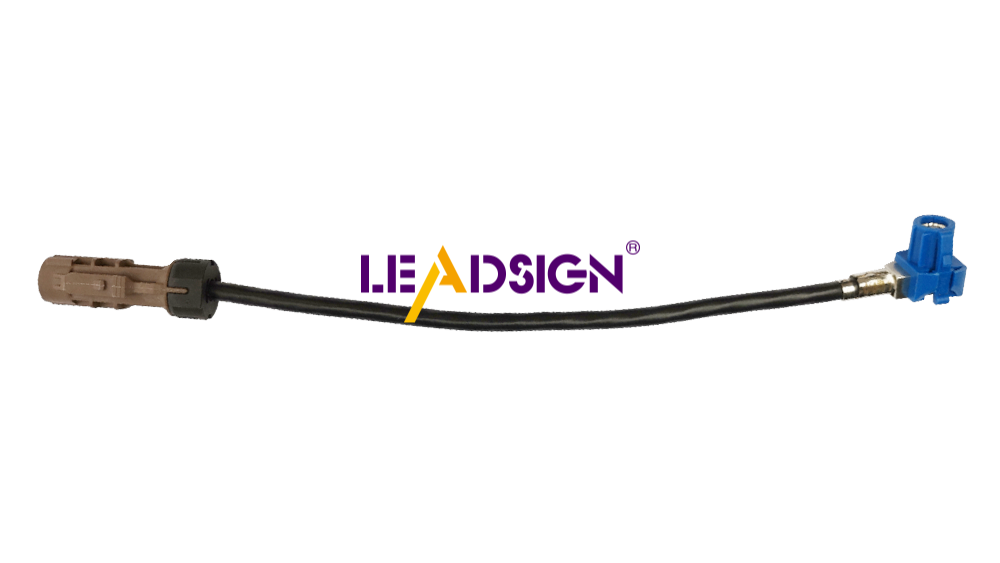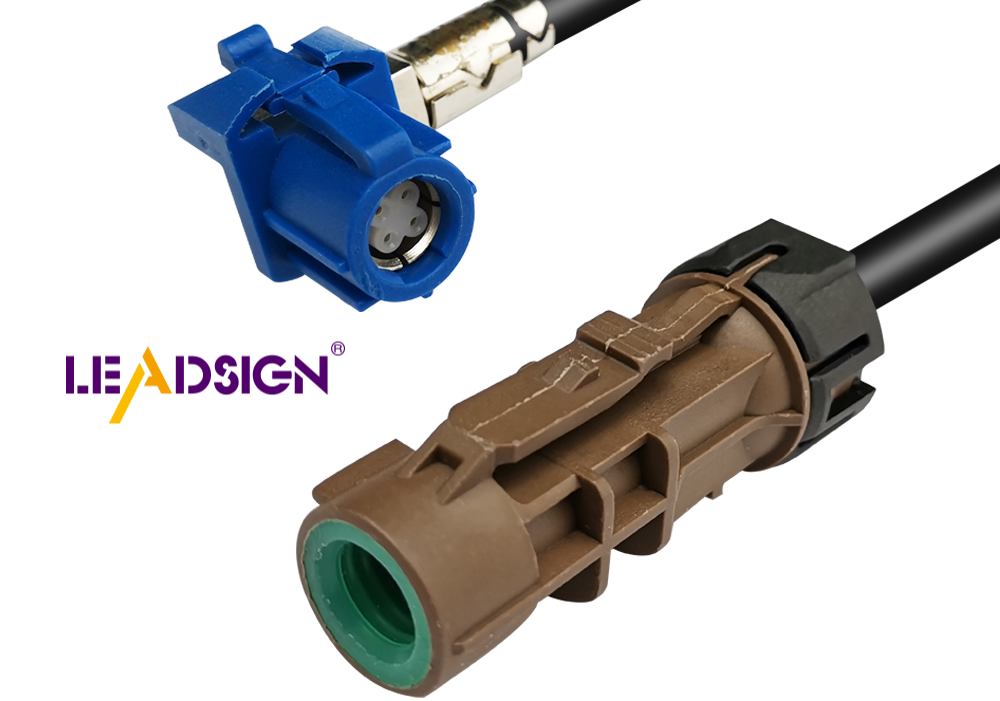Understanding HSD LVDS Cable in Automotive Electrical Connectors

Introducing the HSD LVDS Cable, a game-changer in automotive electrical connectors that enhances data flow efficiency. This cable is essential for powering components such as lights and sensors in vehicles. Automotive manufacturers rely on these cables to integrate new technologies seamlessly. The unique F type connector simplifies connections, boosting both performance and speed. These cables are crucial for telematics systems, ensuring rapid data transmission. They meet the demands of modern vehicles, providing a robust solution for a wide range of applications. Additionally, the HSD LVDS Cable incorporates advanced automotive wire connectors, making it an indispensable tool for today's automotive industry.
Features of HSD LVDS Cable

Strong Build
Material and Design
The HSD LVDS Cable is made from top materials for strength. It has a 26 AWG 4-core design, with each core having 7 strands of thin copper wire. Aluminum foil and braided shields add extra protection. This build helps it work well in car connectors.
Toughness in Cars
Cars need tough cables. The HSD LVDS Cable handles daily wear because of its strong materials. It works steadily even in bad conditions. This makes it great for car wire connectors.
Special Connector Types
Connector Varieties
The HSD LVDS Cable has special connector types. It includes both angled and straight connectors. These offer flexible choices for different car systems. The F type connector makes linking easy, boosting efficiency.
Fits with Car Systems
Fitting with car systems is key. The HSD LVDS Cable fits well with current car setups. This fit ensures the cable meets new vehicle needs. It supports telematics and improves data flow.
Fast Data Transfer
Speed and Performance
Fast data transfer is what the HSD LVDS Cable does best. It allows quick data speeds, ensuring good performance. This is important for entertainment and driver help systems in cars. The cable reduces noise, keeping signals clear.
Use in New Cars
New cars need strong connections. The HSD LVDS Cable works well in things like GPS units and check-up tools. Its small size fits into tight spots easily, making it useful in car connectors.
Engineering Aspects
Signal Quality
Ways to Keep Signals Strong
Keeping signals strong is important in cars. Fast data needs good planning. Engineers use special covers to stop interference. The HSD LVDS Cable has aluminum foil and braided covers. These keep away electromagnetic interference. Shorter cables also help signals stay strong.
Effects of Weather
Weather can change signal strength. Hot and cold affect how cables work. The HSD LVDS Cable works from -40°C to +105°C. This keeps it working well in different weather. Water and dust can hurt signals too. Good sealing and materials stop these problems.
Toughness in Hard Conditions
Tests and Rules
Tests check if cables are tough enough. Makers test the HSD LVDS Cable a lot. They follow rules for testing. Vibration and shock tests copy real-life situations. Temperature tests see how it works over time. Passing these tests shows it's durable.
How It Works in Real Life
Real-life use is key for car cables. The HSD LVDS Cable does well in tough spots. Cars move a lot and face temperature changes often. This cable keeps connections steady always, helping important car parts work right.
Practical Benefits
Small Size
Saves Space
The HSD LVDS Cable is small. It saves space in cars. Engineers like it because it fits in tight spots. The right-angle connector helps too. Cars use space better with this cable.
Fits in Car Systems
The HSD LVDS Cable fits well in car systems. Its small size makes it easy to add to setups. Engineers find it flexible. It works for many car uses without big changes.
Easy to Install
How to Install
Installing the HSD LVDS Cable is easy. Its design makes connections simple. Technicians can connect it fast with straight connectors. This saves time and work. Cars get new systems quicker.
Fixing and Checking
Fixing the HSD LVDS Cable is simple. It's built strong, so fewer repairs are needed. Clear labels help find problems quickly. Technicians fix issues fast and easily. This keeps cars working well for a long time.
Compatibility and Customization

How It Fits with Car Systems
Works with Current Systems
HSD LVDS Cables fit well in cars. They help connect telematics and multimedia parts. You plug them into things like sensors and lights. The F type connector makes this easy, so data moves fast. These cables work well with safety and communication tools. That’s why they’re chosen over others.
Ready for the Future
Cars change fast, so future-proofing is key. HSD LVDS Cables are great for new car tech. They last long in new models. These cables handle future data needs well. The F type connector fits new tech easily. Car makers use them to keep up with changes.
Custom Options
Made for Special Needs
You can change HSD LVDS Cables to fit special needs. They’re flexible for different designs and uses. You can customize connectors for unique cars. The F type connector works in many setups. This helps them perform best in special cases.
Examples of Custom Uses
Custom uses show how flexible these cables are. One way is using them in driver help systems (ADAS). The F type connector keeps connections strong there. Another use is in high-tech media systems, speeding up data flow. They also adapt to tough weather conditions, showing their strength.
HSD LVDS Cables are very useful in cars. They help car systems talk to each other easily. These cables send data fast, which is important for new cars with cool screens and cameras. They are small, so they fit into different parts of the car easily. You can change them to meet special needs, helping future car tech grow. HSD LVDS Cables make cars work better. Car electronics need these cables to connect smoothly. The future of car connections looks bright because HSD LVDS Cables will keep making car systems better.
See Also
Exploring the Fundamentals of HSD Connectors in Automotive
Understanding the Significance of HSD Connectors in Automotive
Decoding Fakra HSD LVDS 4 Pin Connectors in Detail

